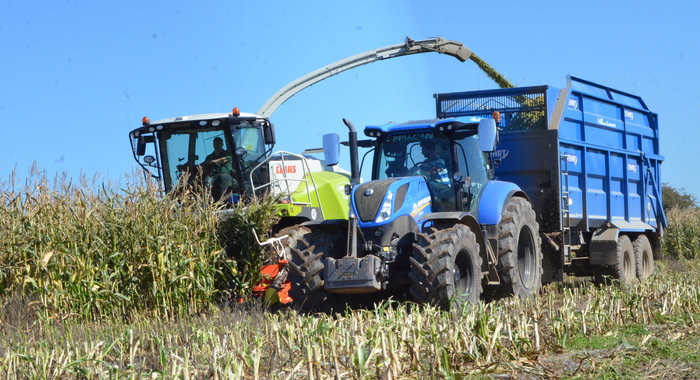Regular analysis of forage and fine-tuning of diets will be essential to make the most of this year’s maize silage according to Dr Liz Homer from Trouw Nutrition who says there will be a wide variation in feed value, reflecting the growing season.
“While many crops were taken early, maturing quickly in the good weather in September, harvesting of many crops was then delayed by the wet start to October resulting in some very mature crops being taken,” Dr Homer comments.
She says the results from the first 900 samples analysed by the company are likely to primarily be from earlier taken crops. On average these crops have a similar dry matter to last year at 32.1% but there is a considerable range. With varying crop maturity, both D value and ME are slightly lower than last year.
“On average starch is 1% down on last year at 30.1%, however there are a large proportion of samples within the 30 – 35% starch range. Starch degradability and bypass starch are similar to last year, which should support milk production.

“Compared to last year NDF, ADF and lignin levels are all slightly increased reflecting the digestibility of the crop. It is probable that late harvested crops will have lower digestibility that those taken in good time which will present different feeding challenges.”
Dr Homer says that on average the reduced digestibility means that both total and rapidly fermentable carbohydrates are reduced which is reflected in a lower acid load meaning rumen health will be better. However, she emphasises that acid load can change with time in the clamp as starch digestibility increases.
“It will be crucial for farmers to get their own clamps analysed throughout the season so their nutritionist knows the quality of the forage available to start diets are correctly balanced. Earlier silage could feed well but later crops will potentially be less digestible and with reduced starch degradability, requiring very different supplementation.
“Consideration will also need to be given to the balance of forages in the diet. If maize is fed with lower digestibility grass silages then cereals may be needed to promote good rumen function.
“Many grass silages have come back with lower crude protein levels. If these are fed with low starch maize silage then supplementation with both cereals and additional protein will be needed.
“With regular analysis and careful balancing it should still be possible to achieve good levels of milk from forage to help control feed costs,” Dr Homer concludes.
Nutrient Analysis of Maize Silage 2020: Source TNGB
| Nutrients | Units | Maize Silage Average 2020 | Maize Silage Average 2019 |
| Dry Matter | % | 32.1 | 32.6 |
| Crude Protein | % DM | 6.9 | 6.8 |
| D Value | % | 72.1 | 73.6 |
| ME | MJ/kg DM | 11.3 | 11.6 |
| Starch | % DM | 30.1 | 31.2 |
| Starch Degradability | % | 79.8 | 80.3 |
| Bypass Starch | g/kg DM | 60.4 | 60.4 |
| Ash | % DM | 3.8 | 3.7 |
| NDF | % DM | 37.7 | 36.6 |
| ADF | % DM | 23.2 | 22.0 |
| Lignin | g/kg DM | 23.4 | 21.5 |
| pH | 4.0 | 3.9 | |
| Lactic Acid | g/kg DM | 51.9 | 50.0 |
| Rapidly fermentable carbohydrates | g/kgDM | 219.9 | 226 |
| Total fermentable carbohydrates | g/kgDM | 507.9 | 520 |
| DyNE | MJ/kgDM | 6.73 | 6.90 |


